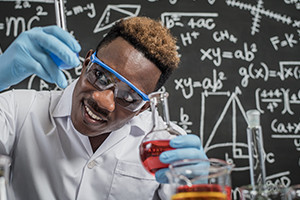Any chemical process is associated with a change in energy because reactants and products have different energies. This advanced chemistry course discusses entropy, or the amount of energy that is not accessible to do productive work, as well as the concept of free energy, which forecasts whether a reaction can occur without the addition of external energy. You will learn to calculate the entropy change of a reaction and the Gibbs free energy.
Over time, a room that starts clean and organised will become more disorderly as people use it and move things around. This course delves into the concepts of entropy and Gibbs free energy. First, we discover how entropy quantifies disorder in a system. Then, you'll learn how the conditions of a reaction can influence entropy and determine an increase or a decrease in nonspontaneous reactions. Spontaneous change and diffusion are the next subjects described, followed by the probability of molecular arrangement and its calculation in multiple systems.
After that, we examine some standard entropy values for several elements, including calcium, graphite, and diamond. The entropy increases or decreases depending on the state of a substance, and the prediction of the change in chemical reaction entropy is then investigated in conjunction with the entropy-temperature curve. The course progresses to calculating a system's entropy, its surroundings and the total entropy. Further, you'll learn about the spontaneity of endothermic reactions based on an increase in system entropy and a drop in the entropy of the surroundings, which can lead to total positive entropy and make the reaction possible.
Next, the course details Gibbs free energy, which integrates enthalpy and entropy in a single equation. The usual molar Gibbs free energy of formation is then described, as are the steps for determining Gibbs free energy. After that, you'll find various Gibbs free energy values for some solid, liquid, and gaseous components and learn how to depict the free energy cycle. Finally, the relationship between Gibbs free energy, available work, and the direction of a chemical reaction is examined. Sharpen your knowledge about chemical reactions with this course. Sign up now.
What You Will Learn In This Free Course
View All Learning Outcomes View Less All Alison courses are free to enrol, study, and complete. To successfully complete this Certificate course and become an Alison Graduate, you need to achieve 80% or higher in each course assessment.
Once you have completed this Certificate course, you have the option to acquire an official Certificate, which is a great way to share your achievement with the world.
Your Alison certificate is:
- Ideal for sharing with potential employers.
- Great for your CV, professional social media profiles, and job applications.
- An indication of your commitment to continuously learn, upskill, and achieve high results.
- An incentive for you to continue empowering yourself through lifelong learning.
Alison offers 2 types of Certificate for completed Certificate courses:
- Digital Certificate: a downloadable Certificate in PDF format immediately available to you when you complete your purchase.
- Physical Certificate: a physical version of your officially branded and security-marked Certificate
All Certificate are available to purchase through the Alison Shop. For more information on purchasing Alison Certificate, please visit our FAQs. If you decide not to purchase your Alison Certificate, you can still demonstrate your achievement by sharing your Learner Record or Learner Achievement Verification, both of which are accessible from your Account Settings.











 Avg. Hours
Avg. Hours  Contains Video
Contains Video  CPD Accredited
CPD Accredited 
 Total XP:
Total XP: 
 Knowledge & Skills You Will Learn
Knowledge & Skills You Will Learn 







